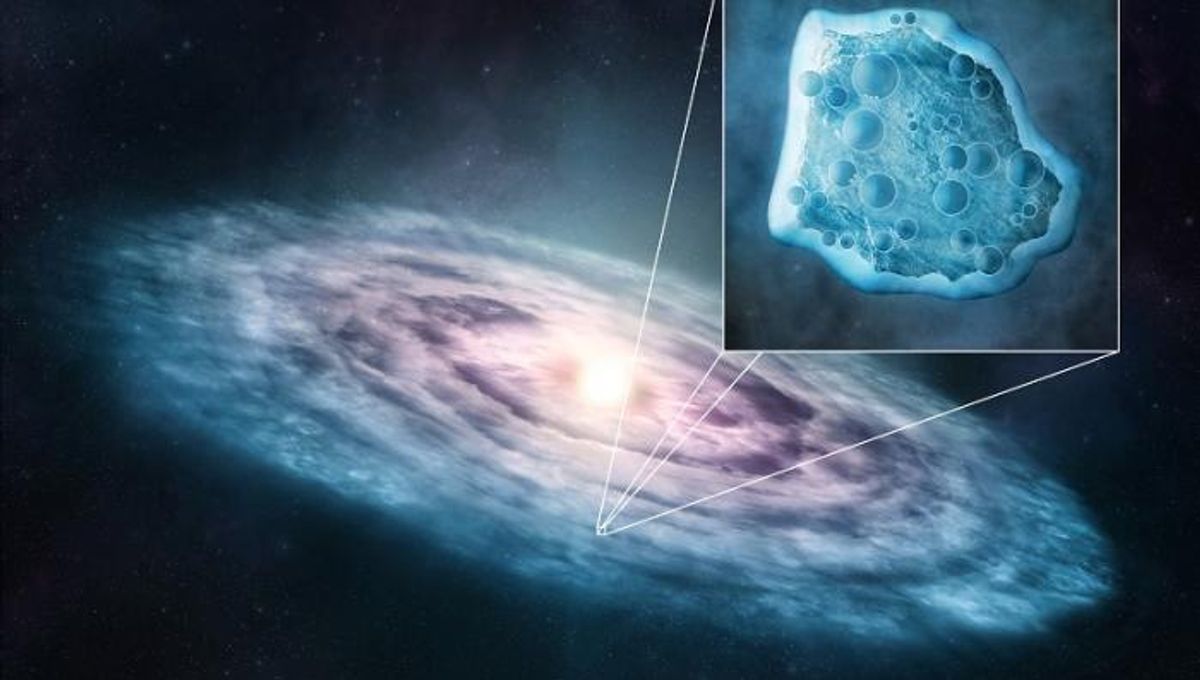
Carbon monoxide is observed clearly in the disks surrounding young stars that are forming planets. But there is a problem. Theories suggest that there should be a lot more of it than astronomers can actually see. Where is this missing carbon monoxide? A new paper has a solution: The molecule is trapped in ice formation around the disk, making it invisible to our observatories.
The work, published in Nature Astronomy, made use of a model designed by Peter Gao to study something different: clouds on exoplanets. Lead author Diana Powell applied it to the disks from where exoplanets will one day emerge. Carbon monoxide is usually found in abundance in the youngest planetary disks, but after at least a million years, the model suggests that the gas will be forming on large ice particles.
Together with observations from the Atacama Large Millimeter/submillimeter Array, or ALMA, the team found that ice trapping carbon monoxide was the likeliest explanation for this mystery. The finding impacts the field of astrochemistry: The measurement of chemical species in space is employed in so many other estimates and models.
“Carbon monoxide is essentially used to trace everything we know about disks—like mass, composition and temperature,” Powell, from the Center for Astrophysics | Harvard & Smithsonian, said in a statement. “This could mean many of our results for disks have been biased and uncertain because we don’t understand the compound well enough.”
The use of a model specific to clouds in the peculiar environment of protoplanetary disks is exciting. It suggests that the complexity of these disks can be understood with approaches we have already employed.
The team hopes that their proposed scenario will be corroborated by new observations and plans to further study the implication of carbon monoxide in ice grains.
“It will be interesting to see how water ice formation in disks, for example, is impacted by microphysical considerations, and in turn how these processes affect planet formation and composition,” added Gao, from the Carnegie Institution for Science.
“This work also illustrates the breakthroughs that can happen when two seemingly disparate fields come into contact, so it’s very exciting! I’m really looking forward to where this can lead, especially if we can validate the model using JWST.”
Source Link: Mysterious Missing Carbon Monoxide May Have Been Hiding In Planet-Forming Disks